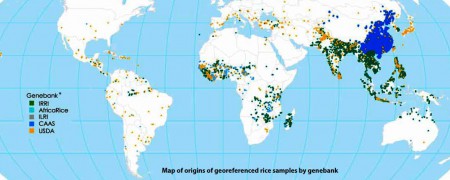A few days ago Daniel Mietchen over at Wikimedian in Residence asked the question How would you illustrate the concept of a seedbank? Well, how would you? This is my idea:

Agricultural Biodiversity Weblog
Agrobiodiversity is crops, livestock, foodways, microbes, pollinators, wild relatives …
A few days ago Daniel Mietchen over at Wikimedian in Residence asked the question How would you illustrate the concept of a seedbank? Well, how would you? This is my idea:

Today: Connections Edition, in which we pick low-hanging fruit, think outside the box, and join up the dots.
We’ve blogged here once or twice before about Focused Identification of Germplasm (FIGS). This is a GIS-based strategy pioneered at the International Center for Agricultural Research in the Dry Areas for choosing genebank accessions based on where they were collected, which in many cases seems to yields a significantly improved chance of landing the trait you want. Well, a new paper is out applying the method successfully to wheat stem rust resistance. But a press release on the ICARDA blog also tells us that “the FIGS team is now launching an international consultation to help spread this practice among the global scientific community, and to learn together to further improve the FIGS tool.” If you want to join in, contact Ken Street (k.street AT cgiar.org) at ICARDA.